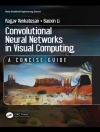The leading text in the field explains step by step how to write
software that responds in real time
From power plants to medicine to avionics, the world
increasingly depends on computer systems that can compute and
respond to various excitations in real time. The Fourth Edition
of Real-Time Systems Design and Analysis gives software
designers the knowledge and the tools needed to create real-time
software using a holistic, systems-based approach. The text covers
computer architecture and organization, operating systems, software
engineering, programming languages, and compiler theory, all from
the perspective of real-time systems design.
The Fourth Edition of this renowned text brings it
thoroughly up to date with the latest technological advances and
applications. This fully updated edition includes coverage of the
following concepts:
* Multidisciplinary design challenges
* Time-triggered architectures
* Architectural advancements
* Automatic code generation
* Peripheral interfacing
* Life-cycle processes
The final chapter of the text offers an expert perspective on
the future of real-time systems and their applications.
The text is self-contained, enabling instructors and readers to
focus on the material that is most important to their needs and
interests. Suggestions for additional readings guide readers to
more in-depth discussions on each individual topic. In addition,
each chapter features exercises ranging from simple to challenging
to help readers progressively build and fine-tune their ability to
design their own real-time software programs.
Now fully up to date with the latest technological advances and
applications in the field, Real-Time Systems Design and
Analysis remains the top choice for students and software
engineers who want to design better and faster real-time systems at
minimum cost.
表中的内容
Chapter 1. Fundamentals of Real-Time Systems.
Chapter 2. Hardware for Real-Time Systems.
Chapter 3. Real-Time Operating Systems.
Chapter 4. Programming Languages for Real-Time Systems.
Chapter 5. Requirements-Engineering Methodologies.
Chapter 6. Software Design Approaches.
Chapter 7. Performance Analysis Techniques.
Chapter 8. Additional Considerations for the Practitioner.
Chapter 9. Future Visions on Real-Time Systems.
关于作者
PHILLIP A. LAPLANTE, Ph D, PE, is Professor of Software
Engineering at Penn State, where he specializes in software and
systems engineering, project management, and software testing and
security. Dr. Laplante spent several years as a software engineer
and project manager working on avionics, computer-aided design, and
software test systems. He has authored or edited twenty-seven books
and has published more than 200 scholarly articles.
SEPPO J. OVASKA, DSc, is Professor of Industrial
Electronics at Aalto University, Finland. He has served as a
visiting scholar at Utah State University, Virginia Tech, and the
University of Passau, Germany, and has published more than 100
articles in peer-reviewed journals. Prior to his academic career,
Dr. Ovaska developed control systems for high-rise elevators; those
contributions led to nine international patents.












